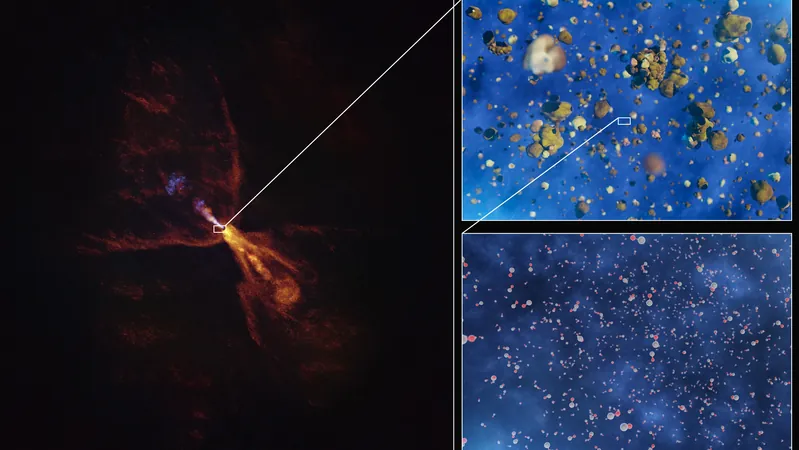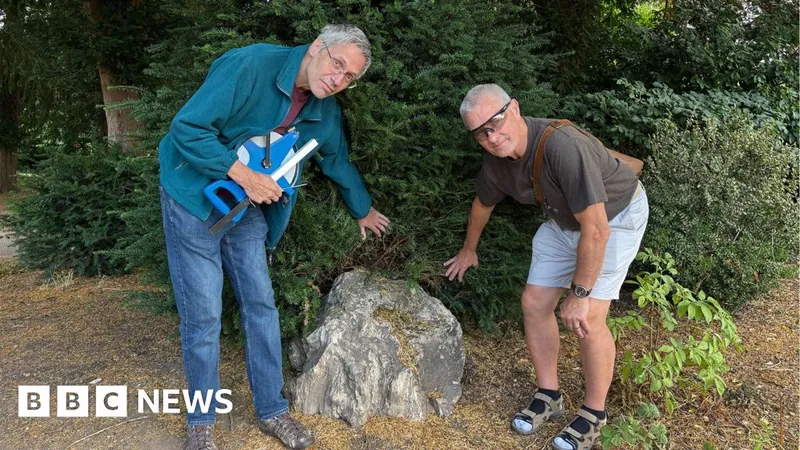
Unveiling Mars' Watery Secrets: Ancient Riverbeds Show Red Planet Was Once Soaked!
2025-07-09
Author: Noah
Exciting revelations from the surface of Mars are stirring up the scientific community! Recent discoveries of extensive ancient riverbeds in the southern highlands indicate that the Red Planet may have been far more hydrated in its past than anyone realized.
A team of researchers uncovered nearly 10,000 miles (16,000 km) of these ancient waterways, believed to be over 3 billion years old, using high-resolution images from Mars orbiters. This sweeping network of riverbeds, while varying in length, includes impressive stretches exceeding 100 miles.
These ancient rivers likely thrived on regular rainfall or snowfall—an unexpected find for an area previously thought to lack any signs of water. "This area was believed to be devoid of evidence for water, but our findings suggest otherwise," explained Adam Losekoot, a PhD student at the Open University.
Historically, the most compelling evidence of past water on Mars has come from valley networks and canyons shaped by flowing liquid. Yet, the scarcity of such features in some regions raised eyebrows about how wet Mars really was.
One particularly intriguing location is Noachis Terra, or the Land of Noah, one of Mars' oldest terrains. Computer models suggest this landscape should have seen significant precipitation, shaping its geological features—thus, the lack of evidence for ancient rivers was perplexing.
To crack this mystery, Losekoot and his team utilized high-resolution imagery captured by NASA's Mars Reconnaissance Orbiter and Mars Global Surveyor. Covering nearly 4 million square miles—an area larger than Australia—these images revealed a treasure trove of geological structures known as fluvial sinuous ridges, or inverted channels.
These ridges result from sediment deposits of ancient rivers that solidified over time, emerging as distinct features once softer surrounding soil eroded. Although many are just a few hundred meters wide and 3.5 kilometers long, others boast remarkable sizes.
One striking image shows a complex network of meandering tributaries where ancient riverbanks overflowed, hinting at dynamic water flow within craters—where liquid water once filled and spilled out.
This groundbreaking research will be unveiled at the Royal Astronomical Society’s national meeting in Durham, indicating that northern Noachis Terra may have once been home to surface water as recently as 3.7 billion years ago. The implications of these findings could reshape our understanding of Mars’ climatic history and its potential for supporting life in the past.









 Brasil (PT)
Brasil (PT)
 Canada (EN)
Canada (EN)
 Chile (ES)
Chile (ES)
 Česko (CS)
Česko (CS)
 대한민국 (KO)
대한민국 (KO)
 España (ES)
España (ES)
 France (FR)
France (FR)
 Hong Kong (EN)
Hong Kong (EN)
 Italia (IT)
Italia (IT)
 日本 (JA)
日本 (JA)
 Magyarország (HU)
Magyarország (HU)
 Norge (NO)
Norge (NO)
 Polska (PL)
Polska (PL)
 Schweiz (DE)
Schweiz (DE)
 Singapore (EN)
Singapore (EN)
 Sverige (SV)
Sverige (SV)
 Suomi (FI)
Suomi (FI)
 Türkiye (TR)
Türkiye (TR)
 الإمارات العربية المتحدة (AR)
الإمارات العربية المتحدة (AR)